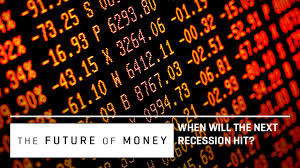The Economy Is in Code Yellow for a Recession Based on These 9 Metrics

Opinions are split on whether the Federal Reserve responded to genuine concerns for the U.S. economy in cutting interest rates for the first time in 11 years in late July, or simply bowed to political pressure. But the warning signs of recession are showing themselves—and a majority of economists now believe the next cuts will come before the 2020 elections. We’re keeping an eye on these nine key metrics to judge the health of the economy.
Unemployment Rate
The U.S. unemployment rate is at historically low levels and is still trending downward.
Consumer Confidence
Consumers are bullish, and they’re getting more so.
Quits Rate
More Americans are leaving their jobs voluntarily, a mark of economic confidence.
Vehicles Sold
U.S. auto sales, a core economic indicator, peaked in 2017 and are trending down.
Stock-Price Valuation
Robert Shiller’s cyclically adjusted P/E ratio index indicates low future returns.
Oil Prices
Anemic oil prices reflect weak industrial demand—a concerning sign.
New Building Permits
New housing construction is stalling—and never reached pre-crisis levels.
ISM Manufacturing Index
The index is approaching 50. Recessions tend to happen below that level.
The Yield Curve
Long-term bond rates are below short-term rates, another recession indicator.
Sources: Census Bureau; Bureau of Labor Statistics; The Conference Board; Bloomberg; Robert Shiller; Institute for Supply Management
A version of this article appears in the September 2019 issue of Fortune with the headline “Code Yellow for the Economy.”
More must-read stories from Fortune:
—This recession indicator is going off—but don’t use it to time the market
—The death of trading: Why more big banks think the business is a losing bet
—Business confidence is plummeting because of a “chaotic” environment
—How are big banks doing when it comes to diversity? Congress isn’t impressed
—“Negative” interest rates used to be unthinkable in the U.S.—not anymore




